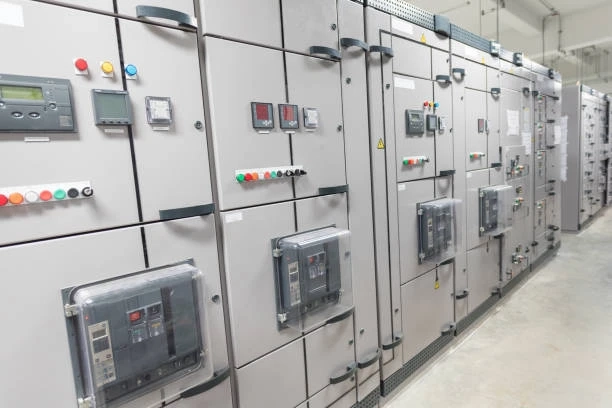Automation control panel
An automation control panel is a device or system that allows for the remote control and monitoring of various automated systems, such as HVAC systems, lighting, security systems, and other building automation systems. These panels typically include a user interface, such as a touch screen or web interface, that allows for easy control and monitoring of the automated systems. They may also include scheduling, energy management, and alarms to provide greater control and efficiency.
What are the key components of an automation control panel and their functions?
An automation control panel typically includes the following key components:
Power supply: Provides power to all the electrical components in the panel.Control relay: Activates and deactivates electrical devices based on input from other components.Programmable Logic Controller (PLC): A small computer that performs logic operations and controls the system based on a pre-programmed sequence.Human-Machine Interface (HMI): A device that allows operators to interact with the system and monitor its status.Input/Output (I/O) modules: Connect sensors and actuators to the PLC, allowing it to receive input from and send output to the field devices.Network communication: Allows the control panel to communicate with other devices or systems on the network, such as a supervisory control and data acquisition (SCADA) system.Circuit breaker: Protects the electrical components in the panel from damage due to overcurrent or short circuit.How does an automation control panel integrate with other systems, such as SCADA and MES?
An automation control panel can integrate with other systems, such as SCADA and MES, through network communication.
SCADA (Supervisory Control and Data Acquisition) systems monitor and control industrial processes remotely. An automation control panel can communicate with a SCADA system through various protocols, such as Modbus or OPC-UA, and send process data, such as temperature or flow rate, to the SCADA system. This allows operators to monitor the process remotely and make adjustments as needed.
MES (Manufacturing Execution System) plans, schedules, and tracks the production process. An automation control panel can integrate with an MES system by sending production data, such as production count, downtime and maintenance status, to the MES system. This allows manufacturers to optimize their production processes, increase efficiency and reduce costs.
SCADA and MES systems can also send commands to the automation control panel, allowing for remote process and production automation control.
Overall, the automation control panel acts as an interface between the physical process and the supervisory systems, allowing for the collection and distribution of process data and the remote control and monitoring of the process.
Cybersecurity and data protection in industrial automation systems.
Cybersecurity and data protection is crucial for industrial automation systems, as these systems often control critical infrastructure and handle sensitive data. A cyber attack on an industrial automation system can cause production disruptions, equipment damage, and even safety hazards.
One of the critical measures to protect industrial automation systems is to segment the network and limit access to only those devices and systems that need it. This helps to prevent unauthorized access to the control systems and sensitive data. Additionally, firewalls and intrusion detection systems can help prevent cyber attacks and detect any suspicious activity on the network.
Another important measure is to implement secure communication protocols, such as VPN, SSH or HTTPS, to protect data as it is transmitted between devices. This helps to prevent data from being intercepted or tampered with during transmission.
Implementing strong authentication and access controls, such as multi-factor authentication, is also essential to protect the system from unauthorized access. This helps to ensure that only authorized personnel can access the control systems and sensitive data.
It is also important to keep the software and firmware of the industrial automation systems up-to-date with the latest security patches and updates. This helps to fix known vulnerabilities and prevent them from being exploited by cyber attackers.
Regularly monitoring and testing the system for vulnerabilities, keeping backups of the configuration and data, and providing training and awareness to the operators and engineers on the best practices for cybersecurity and data protection are also important steps to take to protect industrial automation systems.
Overall, protecting industrial automation systems from cyber threats requires a multi-layered approach which includes implementing security policies and procedures, technology solutions, and employee education and awareness. Read more.
0


